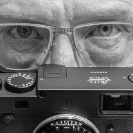Bokeh by any other name would smell as sweet......
-
Recently Browsing 0 members
- No registered users viewing this page.
-
Similar Content
-
- 7 replies
- 978 views
-
CL and using a sigma lens with a aperture ring and A setting ( or any other applicable items to topic)
By davidrc,
- 7 replies
- 547 views
-
- 6 replies
- 2,280 views
-
- 7 replies
- 534 views
-




Recommended Posts
Join the conversation
You can post now and register later. If you have an account, sign in now to post with your account.
Note: Your post will require moderator approval before it will be visible.